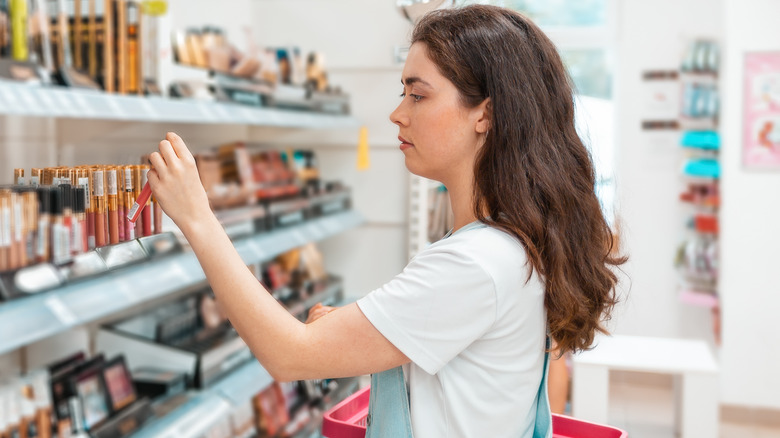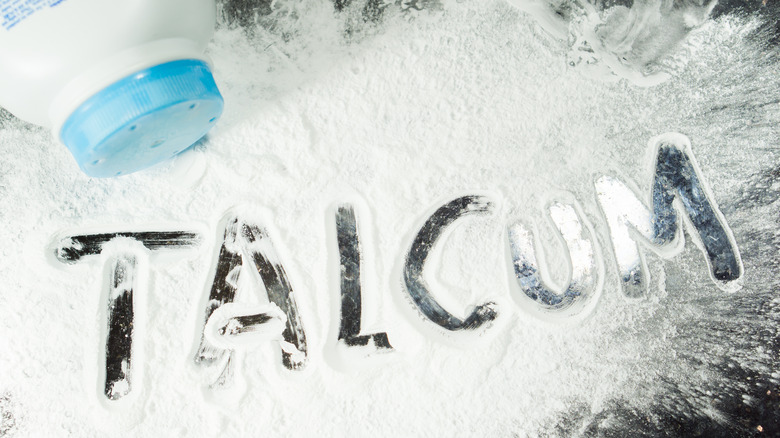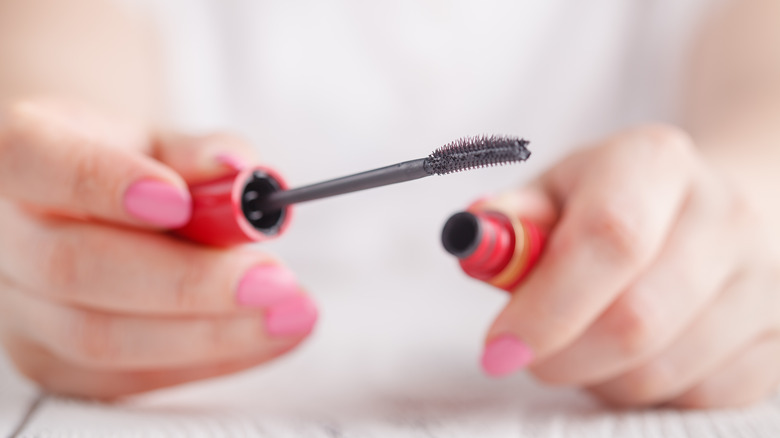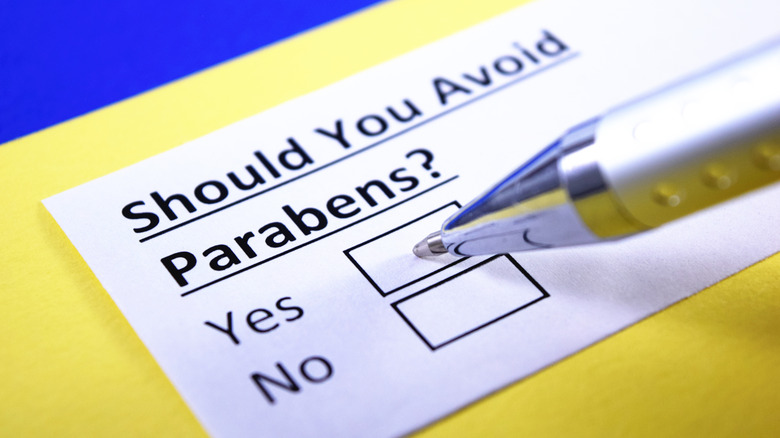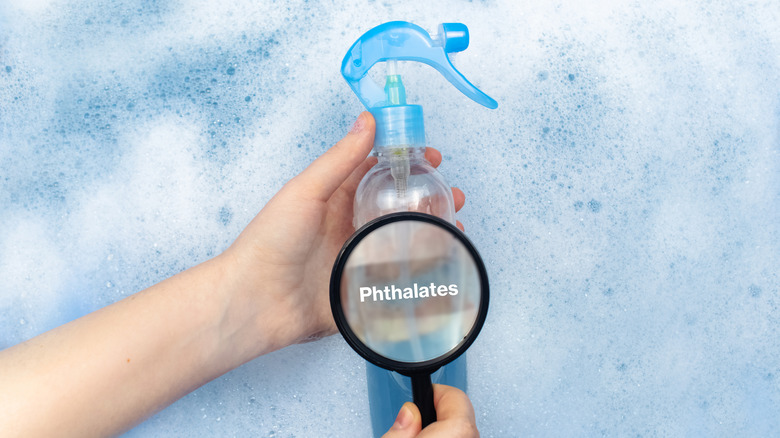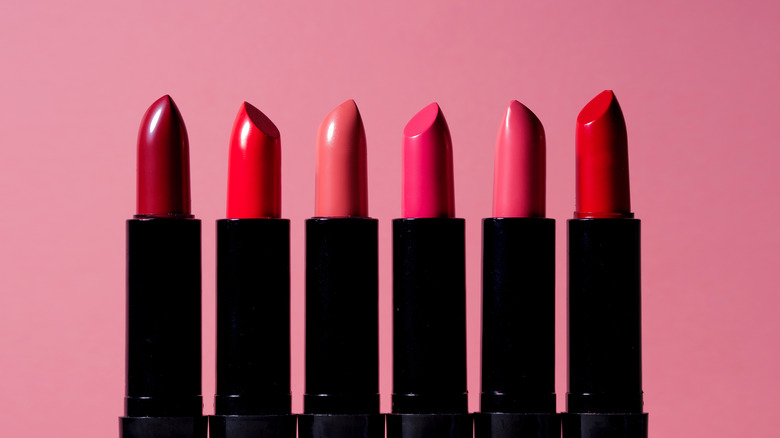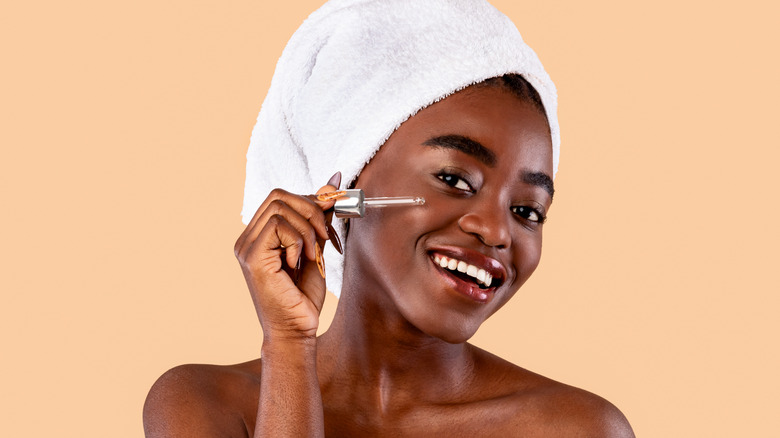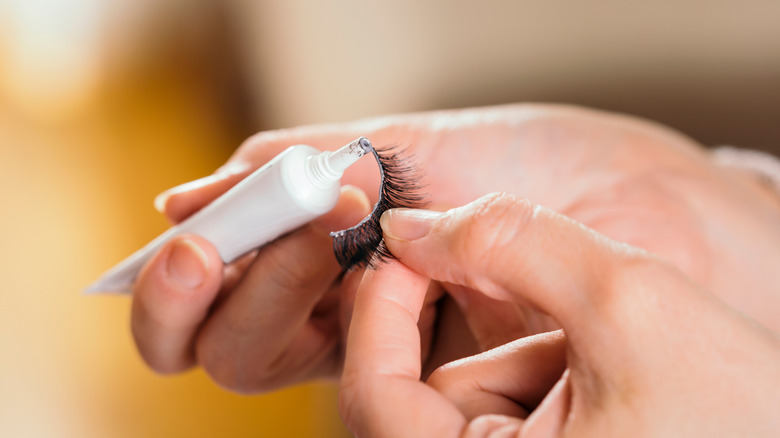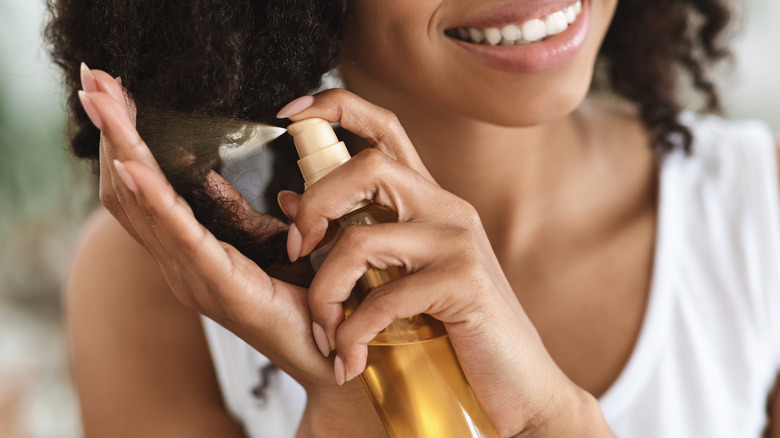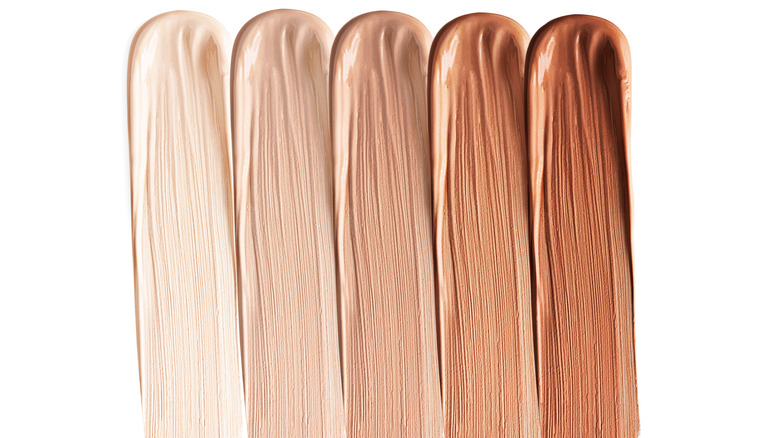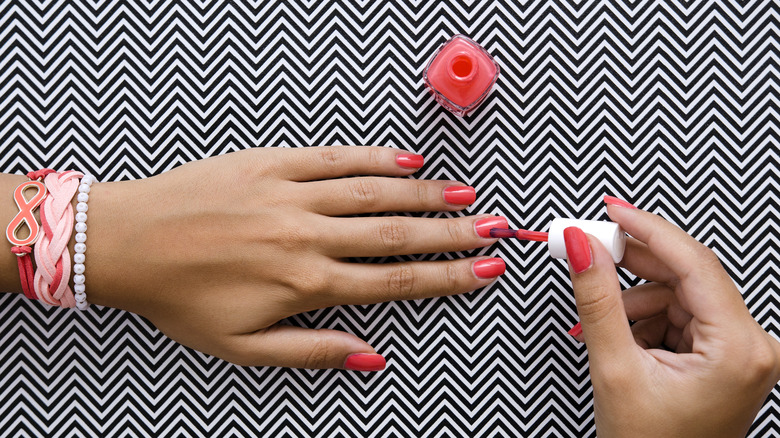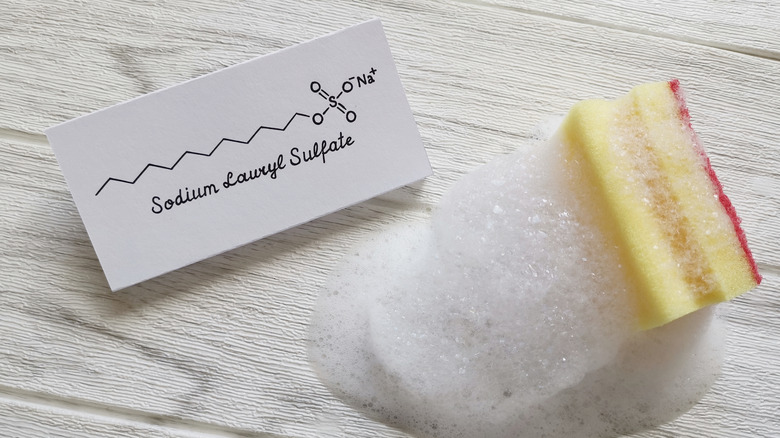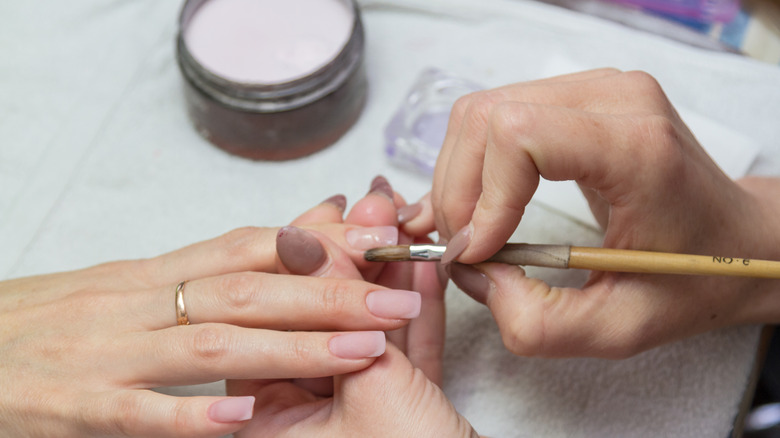Ingredients You Don't Want To See In Your Makeup
When it comes to beauty products, the list of ingredients to avoid is growing longer and longer and can be both confusing and intimating. There's new information coming out all the time about what ingredients are and aren't harmful to your health and, on top of that, each person reacts differently to different ingredients.
The makeup, shampoos, lotions, nail polishes, and other products you apply to your skin can be just as beneficial or harmful as anything you put inside your body. Ingredients found in beauty products have been linked to everything from allergic reactions to hormonal disruptions to cancer, so it's important that we take care of our bodies from the outside in, as well as the inside out (via Safe Cosmetics).
Considering many of us use beauty products every day, it's especially important to know what's in your cosmetics. Reading labels and knowing what ingredients to look out can benefit your overall health and well-being. As such, Health Digest put together this list of ingredients you definitely don't want to see in your makeup. Let's dive into it.
Synthetic fragrances can negatively impact you and those around you
Have you ever smelled a beauty product and been completely overwhelmed by its strong scent? Well, a lot of the time those are synthetic or artificial fragrances. Oftentimes, you can tell if a product has synthetic fragrances or artificial fragrances without using your sniffer, as the label will list either "fragrance" or "parfum." According to Byrdie, these words are "umbrella terms for hundreds of chemicals that brands aren't required to disclose."
Janet Nudelman, policy director for Breast Cancer Prevention Partners (BCPP) and co-founder of the Campaign for Safe Cosmetics, confirmed to The Guardian that "no state, federal or global authority is regulating the safety of fragrance chemicals." Although this is to protect trade secrets and avoid copycatting, it paves the way for toxic chemicals to be included. In fact, according to one BCPP study, about 75% of 140 beauty products that were tested contained harmful chemicals, some of which may even cause cancer.
The best way to avoid synthetic or artificial fragrances and their unwanted ill effects is to look for products that are unscented or fragrance-free. But even then, it's still important to read labels carefully, because some products use other chemicals to mask scent to make them seem "unscented."
Talcum powder could be contaminated with asbestos
You may know talcum powder, aka talc, from products like baby powder, but it is also a common ingredient in powder-based makeup products like blush, setting powder, eye shadow, and more. Although the U.S. Food and Drug Administration has generally recognized talc as safe for use in cosmetics and other products, they did issue a new warning in 2019 and 2020 as some products containing talc had tested positive for asbestos. As a study in the Epidemiology Journal explained, asbestos is a known carcinogen.
According to Drug Watch, a number of studies and lawsuits have suggested a connection between talcum powder and ovarian cancer, in particular. "However, these studies have not conclusively demonstrated such a link, or if such a link existed, what risk factors might be involved," the FDA noted.
The best way to avoid any unwanted or potentially harmful effects of talc is to, of course, avoid it altogether. This can be easier said than done, though, as many cosmetics brands still use talc in their products. However, more companies have begun phasing it out (via Reuters).
PFAS are dangerous and difficult to avoid
Per- and polyfluoroalkyl substances, commonly known as PFAS, are a large group of manufactured compounds that are widely used to make everyday products resistant to stains, grease, and water. They are often used in products like non-stick cookware, waterproof clothing, commercial airplanes, and, oh yeah, makeup. A 2021 study published in Environmental Science & Technology found PFAS in over half of 231 makeup and personal care product samples. These products included lipsticks, eyeliners, mascaras, foundations, concealers, lip balms, blushes, nail polishes, and more. They're particularly prevalent in products like waterproof mascara and eyeliner because they repel water.
While PFAS are widely used in cosmetics products in the United States, Yashi Shrestha, a research scientist and green cosmetic chemist, told Byrdie, "They're linked to serious health effects, including cancer, thyroid disease, and even reduced effectiveness of vaccines." Additionally, the United States Environmental Protection Agency says that they can also be linked to reproductive issues and liver and kidney problems.
Action was taken by U.S. lawmakers in June 2021 with a bill that would ban the use of PFAS from makeup products if it passes (via The Washington Post). The trickiest part about trying to dodge these chemicals, though, is that companies often do not list them on their labels, making them nearly impossible for consumers to avoid. However, there are PFAS-free makeup lists out there though to help you avoid them as you await change.
You may want to watch out for parabens in your cosmetics
If you've ever dabbled into the world of clean beauty, you've definitely heard of parabens before. They are one of the most well-known ingredients to avoid and many brands have started rolling out paraben-free products over the years. And it's with good reason. A 2014 research paper found traces of parabens in breast cancer tissue samples. This is likely because parabens are preservative chemicals that mimic estrogen, so they can wreak havoc on your hormones. But it doesn't only impact women; parabens have also been found to disrupt mens' hormones and decrease their sperm count in men.
However, the U.S. Food and Drug Administration says they may not be as harmful in the small traces found in cosmetics. While this may be good news, it also makes parabens tough to avoid. When they are listed on labels, parabens are usually called methylparaben, propylparaben, butylparaben, or ethylparaben. If you're looking to avoid parabens altogether, consider buying from cosmetic brands that are entirely paraben-free, like Burt's Bees or RMS Beauty.
Phthalates are banned in the EU, but they still linger in U.S. cosmetics
Phthalates are a group of chemicals that are commonly used to make plastic more flexible and can be found in products like shower curtains, window blinds, plastic pipes, and more. But unfortunately, they're also frequently found in cosmetic products and may cause serious harm.
Phthalates hide in products like shampoo, perfume, nail polish, hairspray, and brightly colored makeup. According to a 2014 study in Society for Reproduction and Fertility, these chemicals can be linked to endocrine disruption, developmental and reproductive toxicity, and cancer. They are actually so harmful that they have been banned from cosmetics in the European Union, but unfortunately, they still remain prevalent in products in the United States (via Safe Cosmetics).
WebMD suggests "[avoiding] harmful phthalates as much as possible" and revealed some tips to steer clear of them because, like many other harmful chemicals, they aren't always listed on labels. When they are identified, WebMD noted that "it's usually with an acronym like DHEP or DiBP." You can also opt for products and items that are specifically labeled as phthalate-free.
Is lead lurking in your lipstick?
By now, most people know that lead exposure is harmful to humans. It's been removed from things like paint and toys over the years, but it's shockingly still prevalent in cosmetics products that we apply directly to our faces. According to a study by the Campaign for Safe Cosmetics, 61% of lipsticks tested contained lead, including lipsticks from major brands like L'Oreal, Cover Girl, and Dior. This is concerning because "recent science indicates there is no safe level of lead exposure. Lead is a neurotoxin and can be dangerous at small doses," the report explained.
Lead can also cause reproductive and hormonal issues in both men and women so, naturally, this isn't something people would want to apply to their faces or ingest on a daily basis. Nevertheless, avoiding lead can be difficult. CNN reported that oftentimes, makeup contains lead without actually noting it on the label because it's not an "ingredient" and it's only in small traces.
Retinol can be unsafe if used incorrectly
You may be surprised to see retinol on this list as it's often praised as a miracle skincare ingredient. But that's only if it's used correctly. Retinol is a type of retinoid, which is made from vitamin A and is safe for use on the skin. According to Healthline, it's popular for its anti-aging properties, its ability to treat acne/acne scarring, and because it's been "proven to balance your skin hydration levels." But while there are many benefits to retinol products, cosmetic doctor Mervyn Patterson told Business Insider that retinol is often marketed irresponsibly.
There is much still unknown about retinol, including its interaction with sunlight. Business Insider reported that one of the biggest side effects of wearing retinol products is that "it makes your skin more sensitive to UV sunlight." Because of this, retinol is best suited for skin care products that are only used at night so they won't be exposed to daylight. Yet for some reason, it is still present in plenty of daytime lotions and creams. Additionally, the Campaign for Safe Cosmetics also noted that there are some concerns about retinol's possible long-term carcinogenic effects. As always, it's important to do your research and talk to your healthcare provider about what you're putting on your skin.
Formaldehyde and formaldehyde releasers are known carcinogens, but they're still in makeup
Research has shown for decades that formaldehyde is a known carcinogen and irritant, but it's still a common ingredient in many cosmetic products. It's more commonly known as a preservative used in mortuaries and medical laboratories, but formaldehyde and formaldehyde releasers also are in hair straightening products, nail polish, eyelash glue, and other beauty products (via Women's Health). And aside from being a known carcinogen, the National Cancer Institute noted that the short-term side effects can be unpleasant as well. Formaldehyde can cause a burning feeling in the eyes, nose, and throat as well as wheezing, coughing, nausea, and skin irritation.
Unfortunately, formaldehyde frequently hides under a variety of names like DMDM hydantoin, Diazolidinyl urea, Imidazolidinyl urea, Methenamine, Quaternium-15, and more, making it hard to identify. But thankfully, some retailers like CVS, Rite Aid, Target, and Walgreens are actually starting to ban products that include formaldehyde and formaldehyde releasers. It's always important to double-check labels though to ensure that your makeup products are formaldehyde-free.
Siloxanes may be harmful to humans
Siloxane, which is commonly referred to as cyclical silicone, is a staple ingredient in so many of our cosmetic products. In hair products, siloxane can reduce frizz and add some much-coveted shine. In skin care products, it is able to provide smoothness and hydration. And while siloxane can certainly be useful in cosmetics, it has some potential risks. One 2019 study in Environmental Research showed that they've been linked with endocrine disruption and reproductive issues. The study also noted that siloxanes are particularly prevalent in hair products used by Black women.
In places like the EU and Canada, companies are required to report their use of siloxanes, but they are still allowed to be used in products. If you want to avoid them completely, keep an eye out for cyclotetrasiloxane (D4), cyclopentasiloxane (D5), cyclohexasiloxane (D6), and cyclomethicone when scanning the labels of beauty products.
Petroleum distillates used in makeup are 'produced from crude oil'
Petroleum distillates are commonly found in mascara, foundations, lotions, and more to lock in moisture and even provide fragrance. This compound also happens to be produced in the same oil refineries as auto fuel and heating oil. This crossover is no doubt shocking to many. Nutrition and health specialist J. Maxine MacGwyre wrote in Skin Revision about the dangers of petroleum distillates, saying, "They are hydrocarbon solvents produced from crude oil that have been found to contain cancer-causing impurities and are most often produced in oil refineries that produce automobile fuel."
And aside from the cancer-causing possibilities, the short-term side effects of petroleum distillates also sound extremely unpleasant. They can also cause itchy, irritated rashes and are a known skin and eye irritant. So it certainly doesn't sound like something you'd want to put directly on your eyes or face. Not all brands use petroleum distillates so it is possible to find makeup without this ingredient.
Toluene has been banned in many countries but is still in products in the U.S.
Toluene, also known as butylated hydroxytoluene (BHT), can be found in nail polish, nail treatments, and hair dye despite being potentially dangerous. It's been banned in the EU and Southeast Asia, but it's still found in some products in the United States (via Byrdie). According to the Campaign for Safe Cosmetics, "Exposure to toluene can result in temporary effects such as headaches, dizziness and cracked skin, as well as more serious effects such as reproductive damage and respiratory complications."
According to Byrdie, the chemical has been linked to "brain toxicity" and may be especially dangerous for pregnant women. Nail salon workers are also at higher risk for experiencing negative side effects because of their frequent exposure to nail products. Thankfully, Campaign for Safe Cosmetics reported that brands like OPI, Orly, and Sally Hansen have removed toluene from their products in recent years. Definitely check the label on nail and hair products for toluene and BHT and consider tossing any products (old or new) with this ingredient.
Sodium laureth sulfates can be contaminated with carcinogens
Sodium laureth sulfate (SLS), which is often listed on labels as "sulfates" or "polyethylene glycol," is a common ingredient in many cream-based cosmetics, shampoos, and soaps. This is because it helps skin and hair absorb products. But while it can be useful on that front, it's unfortunately commonly contaminated with measurable amounts of cancer-causing ingredients. According to the David Suzuki Foundation, 1, 4-dioxane, and ethylene oxide are often found in sodium laureth sulfate and these are known human carcinogens. Additionally, it can irritate your skin, eyes, and even lungs.
For many of these reasons, Healthline reported that "an increasing number of products that don't contain SLS are appearing on the market." Look for products that are labeled sulfate-free if you are trying to avoid sodium laureth sulfate. And when checking labels, keep an eye out for chemical names including the letters "eth," as those are usually sulfates.
Acrylates are a potential carcinogen found in many nail products
Acrylates are ingredients found in cosmetics like false eyelash glue and nail products. And according to Campaign for Safe Cosmetics, "Despite evidence of adverse skin, eye, and throat reactions to these chemicals, they continue to be used." The site also noted that acrylates also pose other long-term health concerns like cancer, reproductive toxicity, organ system toxicity, and neurological damage.
Dermatologist Dr. Marie Hayag agrees with these concerns, telling Real Simple that acrylates can cause allergies and are a potential carcinogen. She said it's best to avoid acrylates as much as you can. Some ingredients to look out for on the label are ethyl acrylate, ethyl methacrylate, and methyl methacrylate if you're trying to avoid acrylates. And if you're a fan of fake or acrylic nails, well, Dr. Hayag said, "Practically all artificial nail products contain some form of acrylate, [so] it's best to either avoid them altogether, or at least lower your use of them."

